 |
|
|
|
 |
|
|
|
Button Mushroom (Agaricus bisporus)
|
|
  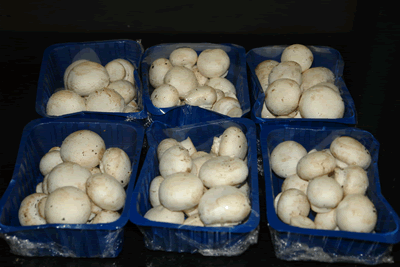 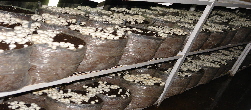
|
|
|
|
Introduction
Mushrooms belong to a separate group of organisms called Fungi. They lack the green
matter (chrolophyll) present in plants and grow on dead and decaying organic materials. From these decaying substrates, they absorb their nutrition with the help of very fine thread like structures
(mycelium) which penetrate into the substratum and are generally not visible on the surface. After the mycelium has grown profusely and absorbed sufficient food materials, it forms the reproductive
structure which generally comes out of the substrate and forms fruiting body, commonly known as mushroom. The mushroom fruiting body may be umbrella like or of various other shapes, size and colour.
Commonly, it consists of a cap or pileus and a stalk or stipe but others may have additional structures like a veil or annulus, a cup or volva, performing various functions in the life-cycle of the
fungus.
Historical
Mushrooms have been devoured as food by mankind since time immemorial after collecting
from the forests. However, mushrooms could not be domesticated due to their complex nature. Though Chinese were the first to do the artificial cultivation of the tropical and subtropical mushrooms
about thousand years ago real commercial ventures started when Europeans started cultivation of button mushroom in green houses and caves during 16th and 17th century. The success to isolate pure culture through tissues and spores was the turning point in the process of commercial mushroom production in world. Mushrooms are now getting significant importance due to their nutritive and medicinal values and income generating venture in about 100 countries.
Mushroom being an indoor crop does not require arable land, except for some
non-agricultural land to build the infrastructure for preparation of substrate, rising of crop, preparation of spawn and postharvest handling. White button mushrooms in India is grown seasonally and
in environment controlled cropping houses and both require building of basic infrastructure. Seasonal growing is done for 5-6 months when outside temperatures are favourable for the crop, i.e.,
during winter months in N.W. plains and from September to April in the hills.
|
|
Components of Mushroom Farm
|
|
     
|
|
  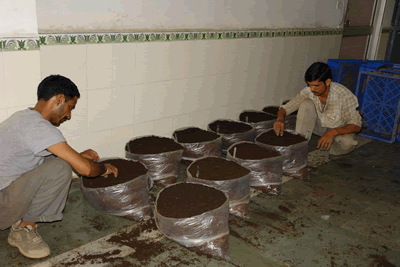 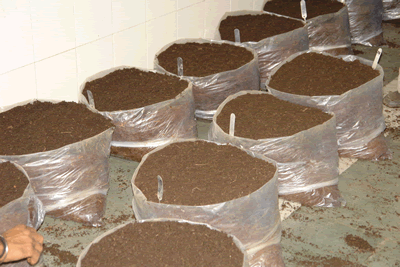  
|
|
Components of a Mushroom Farm
-
Composting Unit
-
Outdoor Phase-I composting platform/indoor bunkers or aerated chambers
-
Indoor Phase-II in peak heating/bulk past-chamber
-
Peak heating chamber
-
Bulk pasteurization chamber
-
Cooling of compost in summer months a special requirement
-
Casing pasteurization chamber
-
Spawn unit
-
Spawn laboratory
-
Cropping unit
-
Seasonal cropping rooms
-
Environment controlled cropping rooms
-
Environment control, air conditioning and forced air circulation
-
Ancillary units
-
Post harvest handling unit
-
Pre-cooling chamber
-
Canning hall with canning line
-
Packaging room
|
|
Low cost Thatched Huts / Mushroom growing Houses
|
|
 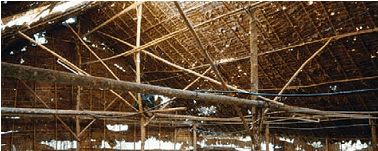 
|
|
|
|
|
|
Spawning
For spawn run air temperature of 23° ± 1C is maintained in the room, with corresponding
bed temperature of 24-25°C (1-2°C higher than air temperature). The fresh air valve is closed and entire air is re-circulated, allowing the carbon dioxide to accumulate to the level of 15000 ppm,
desirable for quick spawn run. Higher concentration of CO2 accelerates the spawn run/vegetative growth of the mushroom fungus. During spawn run above temperature has to be maintained, till
entire compost is impregnated with the mushroom mycelium, alongwith other parameters like high CO2 concentration, high RH (will be discussed later). Increase or decrease in temperature effects the CO2 production
of the compost and the RH of the room. With increase in temperature, RH will tend to fall, and with decrease in tempt. RH will increase. The properly insulated room will ensure uniform temperature in
the cropping room at every stage of crop growth. The air will go into the room at the will of the grower and as per requirement inside, suiting the crop stage. The heat from the cropping room is
removed via cooling coils in the AHU.
|
|
|
|
Casing
The environmental conditions suitable for spawn run, are suitable for case run as well.
The same conditions will be provided for 7 days for case run, as for spawn run, i.e., temperature of 23°C in the air and 24°C in the bed. The RH/CO2 will be same as required for spawn run.
Within one week the case run will be completed, and case run is completed the moment the mycelium is observed in the valleys. Valleys are areas between the peaks as can be seen on top of casing.
Casing is applied uniformly and the material used should not be a finely ground casing soil but in the form of small clods, which form valleys/peaks on surface of casing. The CO2 conc. and
RH should also be within the optimum range for effective/quick case run.
Crop Management
After completion of case run, the cooling of the room is enhanced to bring the air
tempt down to 15-17°C in the room within 2-3 days time. Simultaneously, the fresh air vent is opened to 30% and rest of the air is re-circulated (70%). This brings down the CO2 conc. in the room to 300 ppm to 1000 ppm, desired for pinhead formation. Likewise, the RH is also reduced to 85% from 95%. This facilitates pinhead formation on the casing within a week’s time. The pinheads grow into full button sized mushrooms in another 3-4 days. The environment parameters are maintained as above during entire period of cropping. Temperature has influence on RH and CO2 conc. and hence should be maintained/manipulated, keeping in mind its effect on other two factors. All the three parameters work in synergy with each other to induce pinning on casing surface.
Harvesting
Mushrooms are harvested by gently holding a mushroom body and twisting it. Washing
becomes necessary to remove soil particles if non-peat casing soil is used but washed mushrooms generally deteriorate rapidly than mushrooms packed dry, due to the increased water content that
results in greater growth rate of spoilage by bacteria. Small growers wash in solution of reducing agents to retard the browning caused by polyphenoloxidase.
|
|
Processing
|
|
 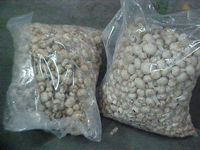 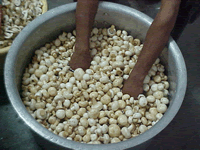 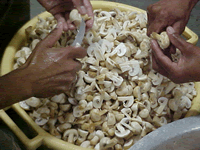 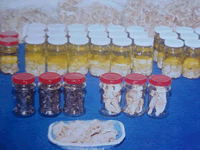 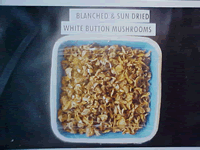
|
|
Sun-drying of mushrooms is one of the simplest and oldest methods followed by the
growers from the time immemorial. Due to the difficulties in drying of some of the mushrooms, new preservation technologies like cabinet drying, canning, pickling, freeze-drying and irradiation
treatment of mushrooms have developed to improve the shelf life and consumption of mushrooms. A variety of products are being prepared from mushrooms. These are mushroom pickle, mushroom powder for
preparing mushroom soup, mushroom sauce, mushroom candy etc. Farmers can prepare these products when there is surplus.
|
|
|
|
|
- Concept by : Director, DMR
- Contents : Dr. B. Vijay, Principal Scientist
- (c) Copyright. All rights reserved. DMR, Solan, HP Designed by Deepak Sharma, AKMU
|
|
|